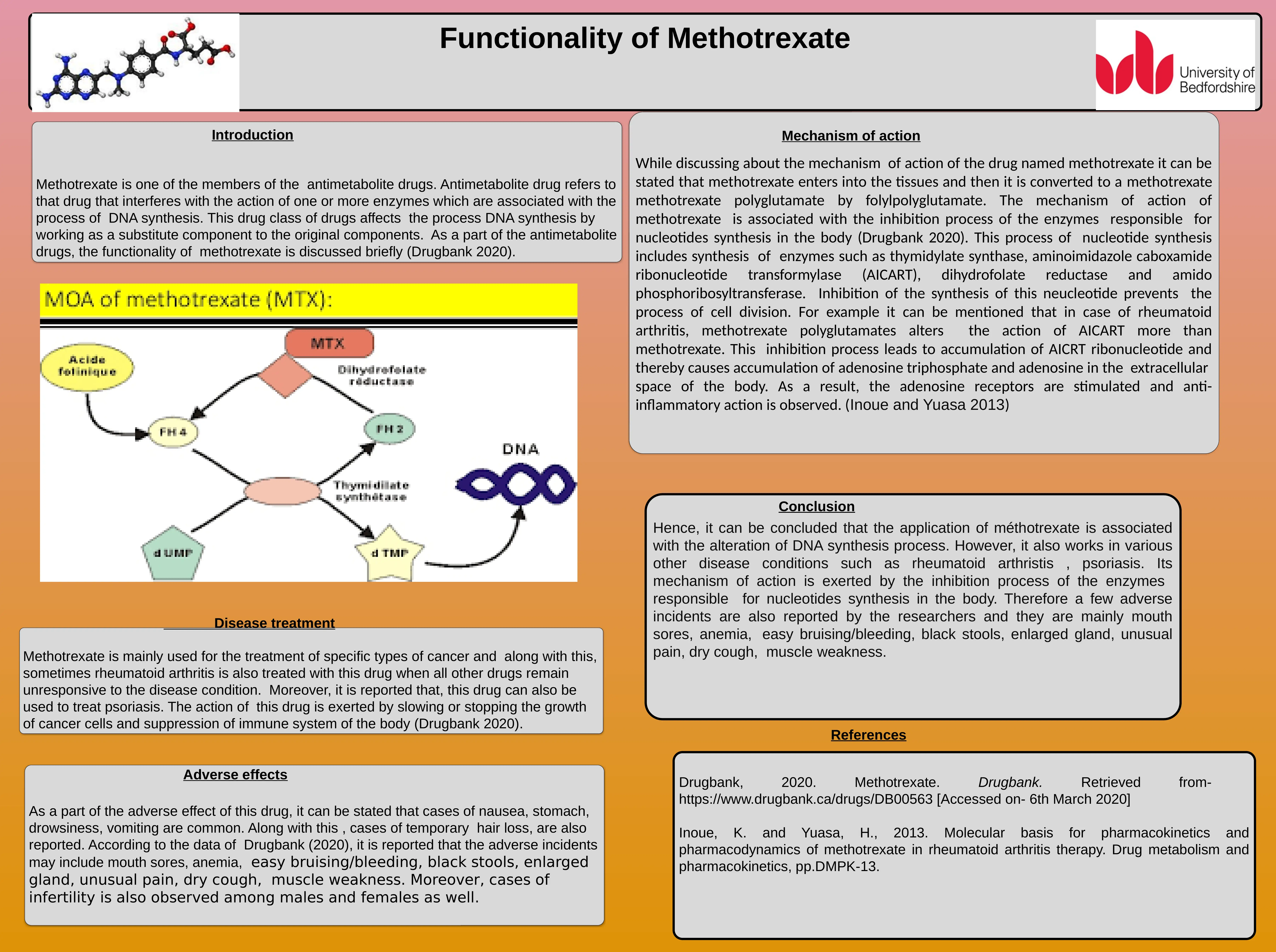Methotrexate: Mechanism of Action, Diseases, and Pharmacology
VerifiedAdded on 2022/08/11
|1
|596
|16
Project
AI Summary
This assignment provides a comprehensive overview of Methotrexate, a drug primarily used in the treatment of specific cancers and rheumatoid arthritis. The document details the drug's mechanism of action, focusing on its role as an antimetabolite that interferes with DNA synthesis by inhibiting enzymes responsible for nucleotide synthesis. It explains how Methotrexate, after entering tissues, is converted to methotrexate polyglutamate, affecting enzymes like thymidylate synthase and dihydrofolate reductase. The assignment also discusses the diseases treated by Methotrexate, including psoriasis, and the adverse effects associated with its use, such as mouth sores, anemia, nausea, and potential infertility. Furthermore, the document emphasizes the importance of understanding the drug's mechanism of action to comprehend its therapeutic benefits and potential risks. The information is supported by references to relevant research, including Drugbank (2020) and Inoue and Yuasa (2013).

![[object Object]](/_next/static/media/star-bottom.7253800d.svg)